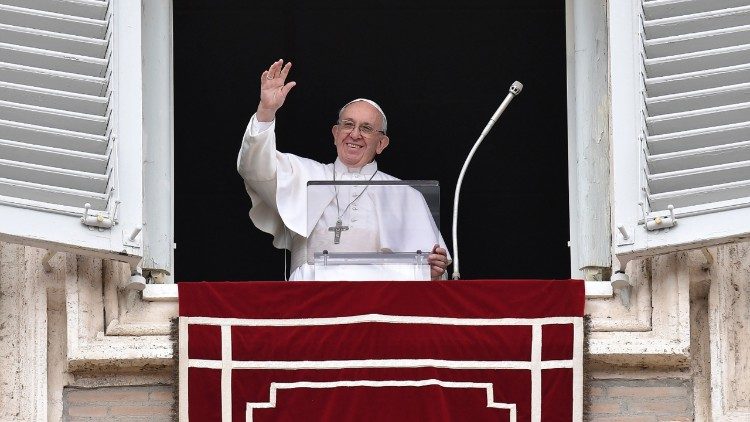Pope: with Mary, let us pray for the Ukrainian people and earthquake victims in Turkey and Syria
At the Angelus, the pontiff mentioned the “renewed [. . .] consecration of the Immaculate Heart of Mary”. He also turned his thoughts to the people of Mississippi and called for peace and reconciliation in Peru. Citing the Gospel episode of Lazarus, he urged the faithful to “take away the stone" and remember the gift of life “even when it seems that all hope has gone,”
Vatican City (AsiaNews) – Pope Francis addressed the faithful gathered in St Peter’s Square for the Sunday Angelus prayer.
In his address, the pontiff noted that, “Yesterday, Solemnity of the Annunciation, we renewed the consecration of the Immaculate Heart of Mary, in the certainty that only the conversion of hearts can open the way that leads to peace.”
To this end, he urged the faithful to “continue to pray for the tormented Ukrainian people” and to “stay close also to the earthquake victims of Turkey and Syria. The proceeds of special collection taking place today in all parishes throughout Italy are destined for them.”
Earlier, Francis spoke about today’s liturgy, the fifth Sunday of Lent, centred on the story of Lazarus in the Gospel of John. Lazarus was a "dear friend of Jesus", and his resurrection was the “culmination of his ‘signs’.” Thus, “The message is clear: Jesus gives life even when it seems that all hope has gone.”
At the end of the Marian prayer, Francis turned his thoughts to the people of Mississippi, in the United States, "struck by a devastating tornado".
Afterwards, as he greeted the many groups of pilgrims from Italy and the world, he addressed Peruvians, urging people to pray “for reconciliation and peace" in a country that "is suffering a great deal".
At the Angelus, he noted how, at times, we can "feel hopeless" or "meet people who have given up hope" because of loss, illness, disappointment, fault, serious error or betrayal.
Indeed, sometimes “life seems to be a sealed tomb: everything is dark, and around us we see only sorrow and despair.” Yet, “Today, Jesus tells us that [. . .] it is precisely in these moments that He comes closer than ever to restore life to us. He weeps with us, as he wept for Lazarus: the Gospel repeats twice that he is moved”.
Moreover, Jesus invites “us not to stop believing and hoping, not to let ourselves be crushed by negative feelings. He approaches our tombs and says to us, as then: ‘Take away the stone’.”
Continuing his reflection, Francis cited Christ's call to take away the stones of pain, errors and failures, and not hide them.
For tis reason, he urged the faithful not to “give in to the pessimism that depresses you, to the fear that isolates, to the discouragement caused by the memory of bad experiences, to the fear that paralyses. I want you free and alive, I will not abandon you and I am with you! Do not let yourself be imprisoned by pain, do not let hope die: come back to life!”
This passage “is a hymn to life, and we read it when Easter is near”. This “is the moment to take away the stone and to go out towards Jesus”.
The pope also reminded confessors “not [to] forget that you too are sinners, and [that] you are in the confessional not to torture” but “to forgive.”
Last but not least, Francis urged the faithful to pray to Our Lady to bear witness “to the hope and joy of Jesus” so that she may “renew in us the joy of not feeling alone and the call to bring light into the darkness that surrounds us.”







.png)










